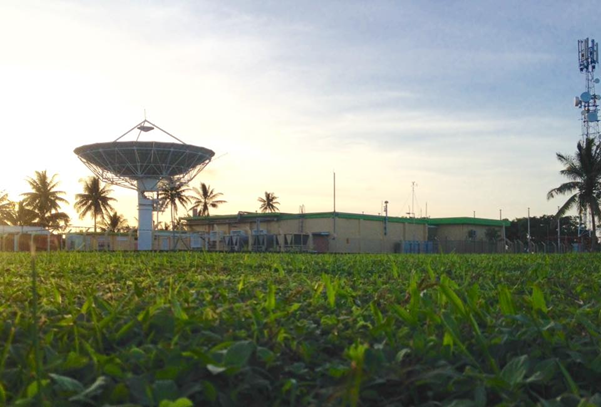One of the most notable aspects of the recent Chinese Navy’s circumnavigation of Australia was the diversity of interpretation by Australian observers. This confusion is largely the result of grey zone activities, which may be overcome by recasting them as ICAD activities.
Through February and early March 2025, the People’s Republic of China (PRC) dispatched a People’s Liberation Army Navy (PLA-N) flotilla comprising the Type 055 cruiser Zunyi, Type 054A frigate Hengyang, and Type 903 oiler Weishanhu, and circumnavigated the Australian mainland. The Hengyang transited through the Torres Strait towards the east coast of Australia, while the other two vessels first rendezvoused in the Coral Sea, before pairing with Hengyang and travelling towards the Tasman Sea. There, on 21 February, the flotilla, known as Task Force 107, began conducting live-fire drills around 350 nautical miles off the Australian coast, forcing a diversion of air traffic in the area over a period of four days. Task Force 107 then circumnavigated Australia, passing through the Australian EEZ near Hobart, entering the Great Australian Bight on 25 February and ultimately reaching the waters west of Perth ten days later.
One task force, different interpretations
A striking feature of the PLA-N circumnavigation was how it was perceived by commentators. There were two distinct schools of thought.
The first group emphasised that the PLA-N largely conducted routine tasks within legal bounds in international waters. While one might, like Defence Minister Richard Marles, regret that Beijing eschewed the customary 12-24 hours advance notice given for live-fire drills, experts noted that China’s live-fire drills conducted in the Tasman Sea did not violate international law. The activities of Task Force 107 nonetheless left an impression that the drills were “legal, but not right.”
A second school of thought, however, viewed the flotilla as a clear case of gunboat diplomacy. The deployment was intended to be threatening and demonstrate to the Australian people that China now possessed the capability to deploy some of its most advanced warships off their major cities. These analyses placed the transit within the broader context of Sino-Australian relations, where RAAF P-8A maritime patrol aircraft have been dangerously intercepted by Chinese planes, and RAN divers injured by Chinese active sonar.
This remarkable disagreement about the nature of the drills reflects the familiar problem posed by what has become known as “grey zone” tactics, a term used over the last decade to describe unfriendly activities that occur below the threshold of conventional war, and also applied by commentators to this case. Grey zone actions benefit from ambiguity, under which threats are often conveyed implicitly, and forceful change is carried out incrementally.
However, grey zone is showing diminished utility as an analytical concept, initially created to distinguish the competitive space between war and peace. The definitional fuzziness of “grey zone” makes it more difficult to craft adequate policy responses. Task Force 107 is a case in point where the shade of grey is in the eye of the beholder.
The limitations of the grey zone term have led to it being replaced with “ICAD”—illegal, coercive, aggressive, and deceptive. On 4 May 2024, Admiral Samuel Paparo discussed China’s actions in the South China Sea, submitting that: “My friend General (Romeo) Brawner […] has renamed grey zone, which sounds otherwise benign and dull, into ICAD which is illegal, coercive, aggressive and deceptive.” Australian Chief of the Defence Force General Angus Campbell likewise praised Brawner, saying “We should call it what it is. And General Brawner and his senior colleagues in the Filipino security community describe it as ICAD – illegal, coercive, aggressive and deceptive.”
Where grey zone groups eclectic phenomena, applying an ICAD framework may disaggregate problematic activities to develop targeted, calibrated responses. The Chinese warships did nothing illegal. Similarly, while some questions remain about the timing and choice of channel of communication for the live-fire drill warning, the deployment was not deceptive. There was also no overt violence or aggression.
The ICAD framework highlights that the issue with Task Force 107 was the spectre of coercion. Task Force 107 constituted a deliberate show of force that aimed at underscoring critical vulnerabilities in Australian military capabilities. Simply put, the deployment—reminiscent of other shows of force elsewhere—makes it clear that China can project naval power anywhere in Australia’s vicinity—and with the ease of this operation, China implicitly signalled that it could do so on a larger scale if it wished.
Keeping watch: future ICAD operations
ICAD reveals that academic and national responses should go beyond debates about an operation’s legality or transparency, but should focus on Australia’s capability and capacity for maritime deterrence, counter aggression, and its ability to withstand coercion. It first needs to establish—if not demonstrate—Australia’s ability to either deny and/or punish aggression, and in all likelihood consider strengthening relevant capabilities and preparedness. It also requires signaling resolve by making it clear that Australia’s activities elsewhere will not be wound down and demonstrating that alliance commitments remain as robust as ever.
In both quantitative and qualitative terms, the deployment of Task Force 107 remained modest, especially when compared with PLA-N ICAD incidents in the East and South China Seas. Unfortunately, this first and more assertive PLA-N maritime presence near Australia is likely not the last of its kind. ICAD-informed analysis will be useful to pinpoint what is problematic about grey zone operations, supporting calibrated policy responses. An ICAD framework clarifies thinking and can tailor Australia’s responses to potential PLA-N presence operations in the future.
Yves-Heng Lim is a Senior Lecturer in Security Studies at the School of International Studies at Macquarie University. His research focuses on the balance of power in the Indo-Pacific, the evolution of China’s strategy, with a particular interest in China’s naval strategy.
Adam Lockyer is an Associate Professor in Strategic Studies at Macquarie University. His work focuses on Australian defence policy, naval theory, and US foreign policy. His forthcoming book is titled: Conventional Maritime Deterrence: The Operational Foundations of Influence at Sea (Georgetown University Press).
Courtney Fung is Associate Professor in the Discipline of Security Studies in the School of International Studies at Macquarie University, and concurrently Non-Resident Fellow at Asia Society Australia and at the Lowy Institute. She researches PRC foreign and security policy.
This article is published under a Creative Commons License and may be republished with attribution.




